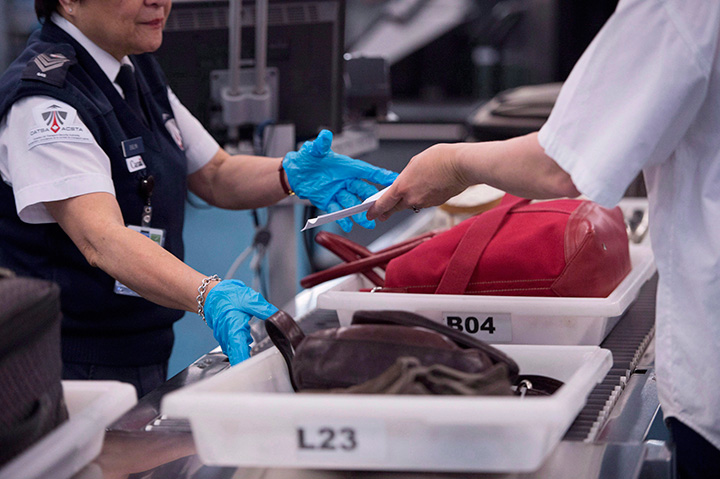Plastic trays that carry your phone, keys and laptop at airport security are more likely to harbour flu germs than any other place when you travel, according to a new study.

Pandemic experts at the University of Nottingham and the Finnish National Institute for Health released their findings in the BMC Infectious Diseases journal on Wednesday.
The scientists looked for the presence of respiratory viruses, like influenza, at the Helsinki-Vantaa airport in Finland during the winter of 2016 in order to identify which surfaces harbour the most germs and also find how to reduce ways of passenger transmission.
They collected samples from 90 surfaces in the airport including the children’s playground, security luggage trays, toilet seats, chair armrests in the waiting area and touch screens on the check-in machine. Even the air was tested.
Viruses were found on 10 per cent of all the surfaces, but they were most commonly found on plastic trays at security.
WATCH: Here’s how long germs, viruses last on your lip products

Security trays are rapidly recycled and potentially touched by several hundred passengers every day, the researchers said. The trays are also “non-porous” meaning virus can survive extra long on them.
“To our knowledge, security trays are not routinely disinfected,” the researches said, adding that although an alcoholic disinfectant would not eliminate all virus on the hand (alcohol gels have been found to be less effective than handwashing for rhinovirus), it is still effective for many other viruses, like influenza.
Other hotspots for viruses were found on shop payment terminals, staircase rails, passport check-in counters, the children’s play area and in the air.
The most common found virus was rhinovirus, which causes the common cold. However, swabs also picked up the influenza A virus.
Oddly enough, the team did not find any evidence of viruses on toilet surfaces.
So, what to do about it?
“This study supports the case for improved public awareness of how viral infections spread,” said professor of health protection, Jonathan Van Tram, from the School of Medicine at the University of Nottingham, in a statement.
“People can help to minimize contagion by hygienic hand washing and coughing into a handkerchief, tissue or sleeve at all times but especially in public places.
For example, the team recommended having hand sanitization stations before and after security screening and increasing the frequency of tray disinfection.
WATCH: These things have as many or more microbes than a toilet seat, but it doesn’t really matter, microbiologist says





Comments